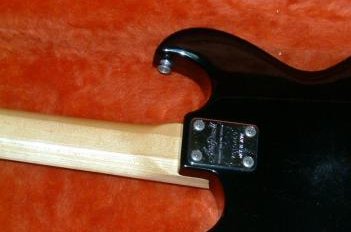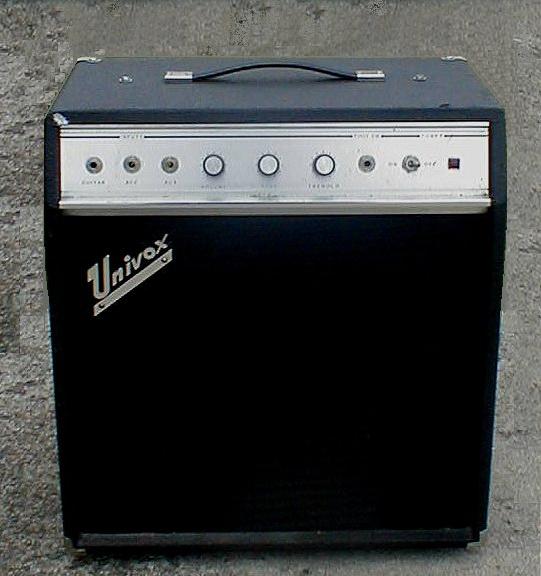|
Lyle Guitars
Lyle guitars were made in Japan between 1960 and the late 1970s in the Matsumoku guitar factory, which also produced Univox, Arai, Aria and other guitar brands. Some Lyle guitars were made in Korea, including the C-600 classical model. History Lyle guitars were distributed in the US solely by the L. D. Heater Music Company of Beaverton, Oregon, USA. It has been suggested that "the Matsumoku Company manufactured many Lyle branded guitars in Japan from (approximately) 1965 to 1972 until they were bought and shut down by Norlin, Gibson's parent company at the time". In fact, Norlin never purchased Matsumoku, nor did they shut them down. This rumor stems from a Gibson (Norlin) lawsuit against manufacturers (specifically Elger the parent company of Ibanez) copying their copyrighted "Open Book" headstock design. The guitars distributed by the L. D. Heater Music Company were not part of the lawsuit. Matsumoku continued to manufacture instruments beyond 1972. L. D. Heater Music Comp ... [...More Info...] [...Related Items...] OR: [Wikipedia] [Google] [Baidu] |
Matsumoku
Matsumoku Industrial was a Japanese manufacturing company based in Matsumoto, Nagano, between 1951 and 1987. Established in 1951 as a woodworking and cabinetry firm, Matsumoku is remembered as a manufacturer of guitars and bass guitars, including some Epiphone and Aria guitars. (There is occasional confusion between "Matsumoku" and "Matsumoto". Matsumoto is a town in Japan's Nagano Prefecture, where FujiGen Gakki, Gotoh, and other musical instrument companies have manufacturing plants. Matsumoto Musical Instrument Manufacturers Association is also the name of a musical instrument manufacturing cooperative, headed by Gotoh). History In 1951, Matsumoku was founded as Matsumoto Mokkō ("Matsumoto Woodworking Company") by Mr. Tsukada in Matsumoto, Nagano, Japan. It was a family-owned woodworking business that specialized in building tansu cabinets n English: "[Sometime between 1946-1951,''When he ''[Harayama">ometime_between_1946-1951,.html" ;"title="n English: "[Sometime bet ... [...More Info...] [...Related Items...] OR: [Wikipedia] [Google] [Baidu] |
Univox
Univox was a musical instrument brand of Unicord Corporation from the early 1960s, when they purchased the Amplifier Corporation of America of Westbury, New York and began to market a line of guitar amplifiers. Univox also distributed guitars by Matsumoku, effects units by Shin-Ei Companion, and synthesizers by Crumar and Korg. In 1985, Unicord Corporation was purchased by Korg, and the Univox brand was phased out. History In the early 1960s the Unicord Corporation, a manufacturer of electric transformers, purchased the Amplifier Corporation of America and began marketing a line of amplifiers under the name of Univox. The company was purchased by Gulf+Western in 1967. Univox-branded fretted instruments (electric and acoustic guitars and electric basses) began being imported from Japanese contract manufacturer Matsumoku in 1975, where they continued until 1982, after which instruments were made in Korea under the "Westbury" brand. The Unicord Corporation was purchased by Korg in ... [...More Info...] [...Related Items...] OR: [Wikipedia] [Google] [Baidu] |
Aria (guitar Company)
In music, an aria (Italian: ; plural: ''arie'' , or ''arias'' in common usage, diminutive form arietta , plural ariette, or in English simply air) is a self-contained piece for one voice, with or without instrumental or orchestral accompaniment, normally part of a larger work. The typical context for arias is opera, but vocal arias also feature in oratorios and cantatas, or they can be stand-alone concert arias. The term was originally used to refer to any expressive melody, usually, but not always, performed by a singer. Etymology The Italian term ''aria'', which derives from the Greek ἀήρ and Latin ''aer'' (air), first appeared in relation to music in the 14th century when it simply signified a manner or style of singing or playing. By the end of the 16th century, the term 'aria' refers to an instrumental form (cf. Santino Garsi da Parma lute works, 'Aria del Gran Duca'). By the early 16th century it was in common use as meaning a simple setting of strophic poetry; me ... [...More Info...] [...Related Items...] OR: [Wikipedia] [Google] [Baidu] |
Norlin
Norlin is a surname. Notable people with the surname include: *Ann-Marie Norlin (born 1979), Swedish footballer * Annika Norlin (born 1977), Swedish pop artist * George Norlin (1871–1942), American university president *Per Norlin Per Adolf Norlin (23 January 1905 – 11 January 1992) was a Swedish businessman. He was CEO of Swedish Intercontinental Airlines (SILA), Scandinavian Airlines (SAS) and AB Aerotransport (ABA). Career Norlin was born in Stockholm, Sweden, th ... (1905–1992), Swedish businessman * Tempest-Marie Norlin (born 1991), Swedish footballer {{surname ... [...More Info...] [...Related Items...] OR: [Wikipedia] [Google] [Baidu] |
Gibson Guitar Corporation
Gibson Brands, Inc. (formerly Gibson Guitar Corporation) is an American manufacturer of guitars, other musical instruments, and professional audio equipment from Kalamazoo, Michigan, and now based in Nashville, Tennessee. The company was formerly known as Gibson Guitar Corporation and renamed Gibson Brands, Inc. on June 11, 2013. Orville Gibson started making instruments in 1894 and founded the company in 1902 as the Gibson Mandolin-Guitar Mfg. Co. Ltd. in Kalamazoo, Michigan, to make mandolin-family instruments. Gibson invented archtop guitars by constructing the same type of carved, arched tops used on violins. By the 1930s, the company was also making flattop acoustic guitars, as well as one of the first commercially available hollow-body electric guitars, used and popularized by Charlie Christian. In 1944, Gibson was bought by Chicago Musical Instruments (CMI), which was acquired in 1969 by Panama-based conglomerate Ecuadorian Company Limited (ECL), that changed its name ... [...More Info...] [...Related Items...] OR: [Wikipedia] [Google] [Baidu] |
Ibanez
is a Japanese guitar brand owned by Hoshino Gakki. Based in Nagoya, Aichi, Japan, Hoshino Gakki were one of the first Japanese musical instrument companies to gain a significant foothold in import guitar sales in the United States and Europe, as well as the first brand of guitars to mass-produce the seven-string guitar and eight-string guitar. Ibanez manufactures effects, accessories, amps, and instruments in Japan, China, Indonesia and in the United States (at a Los Angeles-based custom shop). they marketed nearly 165 models of bass guitar, 130 acoustic guitars, and more than 300 electric guitars. After Gibson and Fender, Ibanez is considered the third biggest guitar brand. History The Hoshino Gakki company began in 1908 as the musical instrument sales division of the ''Hoshino Shoten'', a bookstore chain. Hoshino Gakki decided in 1935 to make Spanish-style acoustic guitars, at first using the "Ibanez Salvador" brand name in honor of Spanish luthier Salvador Ibáñez, and l ... [...More Info...] [...Related Items...] OR: [Wikipedia] [Google] [Baidu] |
Headstock
A headstock or peghead is part of a guitar or similar stringed instruments such as a lute, mandolin, banjo, ukulele and others of the lute lineage. The main function of a headstock is to house the pegs or mechanism that holds the strings at the "head" of the instrument. At the "tail" of the instrument the strings are usually held by a tailpiece or bridge. Machine heads on the headstock are commonly used to tune the instrument by adjusting the tension of strings and, consequentially, the pitch of sound they produce. Construction details Two traditional layouts of guitar tuners are called "3+3" (3 top tuners and 3 bottom ones) and "6 in line" tuners, though many other combinations are known, especially for bass guitars and non-6-string guitars. When there are no machine heads (i.e. tuners are not needed or located in some other place, for example, on guitar body), the guitar headstock may be missing completely, as in Steinberger guitar or some Chapman stick models. The heads ... [...More Info...] [...Related Items...] OR: [Wikipedia] [Google] [Baidu] |
Alembic
An alembic (from ar, الإنبيق, al-inbīq, originating from grc, ἄμβιξ, ambix, 'cup, beaker') is an alchemical still consisting of two vessels connected by a tube, used for distillation of liquids. Description The complete distilling apparatus consists of three parts: the "cucurbit" (Arabic: ; Greek: , ), the still pot containing the liquid to be distilled, which is heated by a flame; the "head" or "cap" (, ; Greek , ) which fits over the mouth of the cucurbit to receive the vapors, with an attached downward-sloping "tube" (, ); and the "receiver" (, ; , or , ) container. In the case of another distilling vessel, the retort, the "cap" and the "cucurbit" have been combined to form a single vessel. The anbik is also called the raʾs (head) of the cucurbit. The liquid in the cucurbit is heated or boiled; the vapour rises into the anbik, where it cools by contact with the walls and condenses, running down the spout into the receiver. A modern descendant of the alemb ... [...More Info...] [...Related Items...] OR: [Wikipedia] [Google] [Baidu] |
Rolling Stone
''Rolling Stone'' is an American monthly magazine that focuses on music, politics, and popular culture. It was founded in San Francisco, San Francisco, California, in 1967 by Jann Wenner, and the music critic Ralph J. Gleason. It was first known for its coverage of rock music and political reporting by Hunter S. Thompson. In the 1990s, the magazine broadened and shifted its focus to a younger readership interested in youth-oriented television shows, film actors, and popular music. It has since returned to its traditional mix of content, including music, entertainment, and politics. The first magazine was released in 1967 and featured John Lennon on the cover and was published every two weeks. It is known for provocative photography and its cover photos, featuring musicians, politicians, athletes, and actors. In addition to its print version in the United States, it publishes content through Rollingstone.com and numerous international editions. Penske Media Corporation is the c ... [...More Info...] [...Related Items...] OR: [Wikipedia] [Google] [Baidu] |







